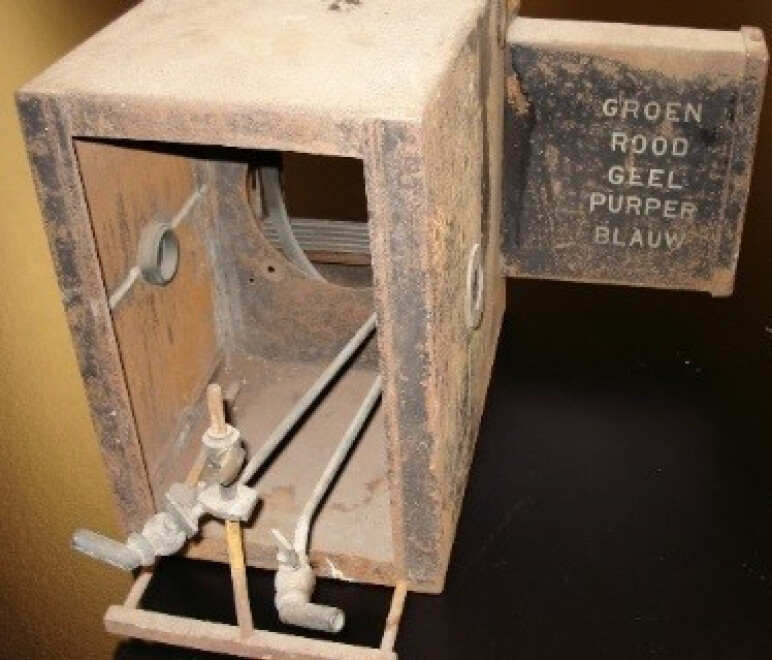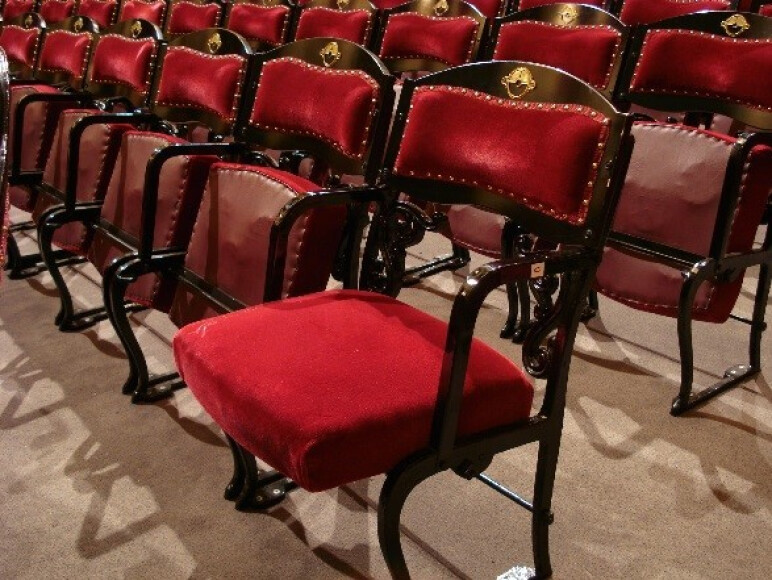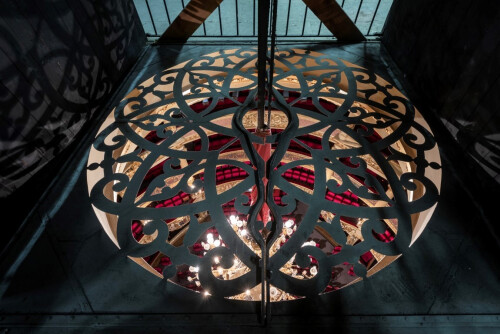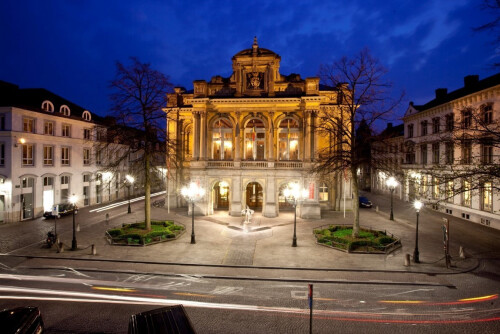Close
ARCHIVE: This exhibition is closed
Before the theatre was built, medieval houses had to be demolished, streets re-directed, and a new theatre square built to make room for the new complex. Six architects submitted a design, and that of Gustave Saintenoy was chosen. The eclectic building exudes wealth.
In 150 years, the set-up has changed a lot. The Great Theatre of Bruges has been converted from an elitist theatre with class segregation to an open cultural house for theatre, modern dance, and music.
In the Arentshuis we contextualise the history of this place in Bruges, Belgium, and abroad using authentic documents and exhibits, works of art, moving images, digital reconstructions, and sound.
Organisation: Musea Brugge en Cultuurcentrum Brugge m.m.v. Stadsarchief Brugge, Dienst Monumentenzorg & Erfgoed Brugge, HOWEST
Sound on the stage
This wheel-shaped object was used in days gone by to imitate the sound of a cart or carriage riding over cobblestones. Someone used to walk up and down with it behind the scenes, out of sight of the audience. The sound of horses' hooves was made by knocking together the two halves of a coconut. Rain was simulated by running dried beans over a stretched piece of fabric or rotating them in a drum.
Food on the table
The props made people believe that there was real bread, cake, fruit, meat or fish on the table. An invoice in the city archives dating from 1887 tells us that this ‘Carton-pâte’ was purchased from a Paris-based company called Hallé. These items all still have their original painting, although they have obviously become a little dulled with age over the years.
In the limelight
This limelight, dating from the early part of the 19th century, was recently found in one of the cellars of the Municipal Theatre. It is a remarkable piece of equipment. This early form of theatre spotlight was used long before the advent of electricity. A limelight of this kind made it possible for the first time to channel light with lenses or mirrors. The light was white, but could be coloured by means of different filters. A strong, targeted source of light, suitable for use in large spaces, made it possible to place the focus on particular actors or actions on stage.
Seating the public
In the early years, there were a variety of different chairs, benches and seats in the Municipal Theatre. The best chairs and seats were reserved for the 'parterre' (front stalls) and the 'loges' (private boxes). The cheaper your ticket, the less comfort you got! Further away from the stage, there were rows of benches, and the poorest-theatre goers had to stand to watch the performance from the fourth tier, right at the back of the auditorium, which was known as ‘t kiekenkot (the henhouse).
More about the story behind the new City Theatre
More about the museum Arentshuis













